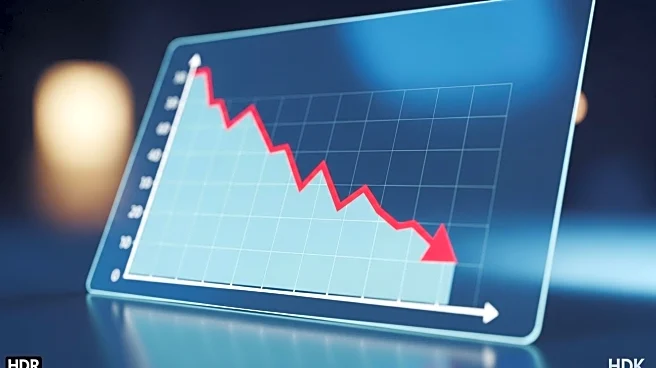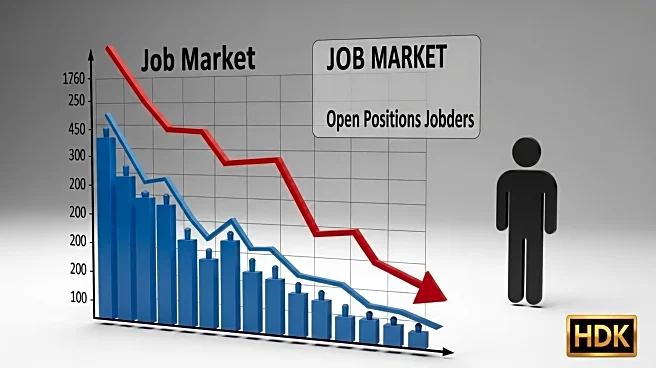What is the story about?
What's Happening?
The ISM Manufacturing PMI report for August 2025 indicates a PMI of 48.7%, up from 48% in July, marking the sixth month of contraction in the sector. The New Orders Index rose to 51.4%, signaling growth after six months of decline, while the Production Index fell to 47.8%. The Prices Index remained high at 63.7%, indicating ongoing price increases. The report highlights challenges such as tariffs and supply chain issues affecting production and employment. Despite some growth in industries like Textile Mills and Food, Beverage & Tobacco Products, many sectors continue to face contraction.
Why It's Important?
The PMI is a critical measure of manufacturing health, and its contraction suggests broader economic challenges. The increase in new orders is a positive sign, but the decline in production and employment points to ongoing difficulties. Tariffs and supply chain disruptions are significant factors impacting the sector, potentially affecting U.S. economic growth and competitiveness. The report underscores the need for strategic responses to these challenges to support manufacturing and related industries.
What's Next?
The ISM report suggests that manufacturing may continue to face challenges due to tariffs and economic uncertainty. Companies are likely to focus on managing headcounts and costs, with potential impacts on employment and production levels. The report indicates that future production may benefit from low customer inventory levels, but ongoing tariff issues could hinder recovery. Stakeholders, including policymakers and industry leaders, may need to address these challenges to support manufacturing growth.
Beyond the Headlines
The report highlights the broader implications of tariff policies and economic uncertainty on manufacturing. The contraction in the sector could lead to shifts in global supply chains and impact U.S. competitiveness. The focus on managing costs and headcounts may affect innovation and long-term growth. The report underscores the need for stable trade policies and economic strategies to support manufacturing and related industries.
AI Generated Content
Do you find this article useful?














